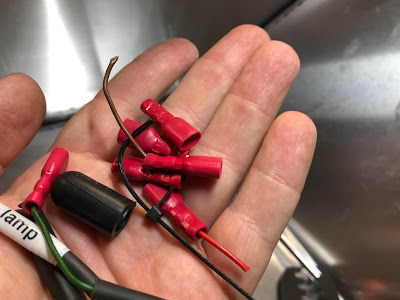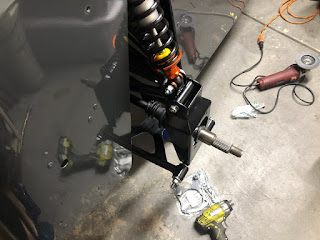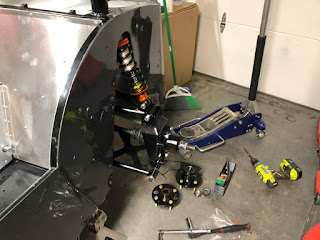It's been a minute since my last update. Haven't gotten a ton more progress in but there are a few updates.
Driveshaft/Differential
The drive shaft is installed and fits perfectly. Discovered that the bolt pattern on the diff flange isn't square, small pain in the ass. Unfortunately I'm going to have drop the diff at least once more to sort out some bushing issues. Future me issue, though.Short Shifter
The lower ball bushing provided by GBS is too big for the NC 5-speed transmission. Needs to be replaced with a slightly smaller bushing for 1990-2014 5-Speeds. I've ordered a new bronze bushing from 5X Racing...because why order a cheap-o plastic bushing when you get a trick machines bronze bushing instead?When tightened down to the correct torque, the shifter ball binds up making shifting impossible. The difference between binding a moving smoothly is just a couple of lb/ft of torque on the screws. A compressible shim made of FelPro 3060 1/32" (.03125"/.79mm) fiber-rubber gasket material should fix that.
Windshield
ITBS!
The Individual throttle bodies are are now permanently bolted to the car without any dramas. One of the header bolts is super short, I ordered a 50-pack of M8x1.25x12mm socket head screws from McMaster-Carr. It would have been really nice if GBS had machined the throttle body flange to accept the OEM Ford O-rings.Header Installation
I've gotten a little further on that test fitting the header, it's pretty much bolted to the car forever, now. PastMe did PresentMe a solid, preemptively ordering M10x1.5x22mm flange head bolts last month that thread into the head smoothly. I think the issues had was due to the aluminum coating on the bolts I'd done the test fit up with.Engine Harness
Laying out the engine harness things pretty much line up where they should but there are some small issues to work out.From GBS I'm still waiting for the left hand drive alternator bracket and parts, oil filler cap kit, and water pump inlet. All of these parts have been shipped but it took a ton of time for them to get here. It took a long time to get the bracket, GBS had to source ethical free-range aluminum from which to machine the part and then send it out to a small batch artisanal powder coater for finishing.












































